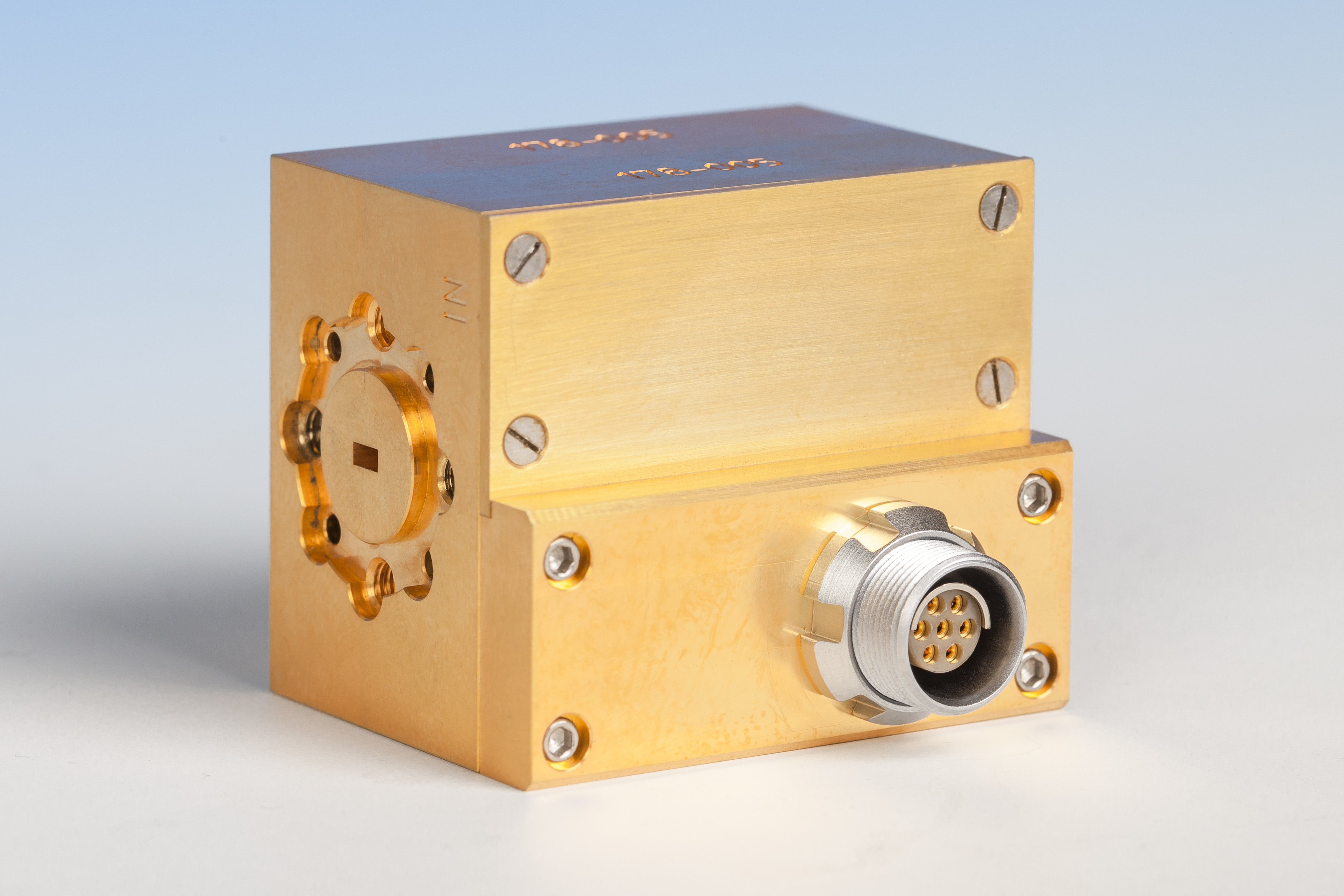MOSHEMT – novel transistor technology reaches record frequencies
Researchers at Fraunhofer IAF have succeeded in developing a new type of transistor with extremely high cut-off frequencies: Metal Oxide Semiconductor HEMTs, or MOSHEMTs, in short. For this purpose, they replaced the Schottky barrier of the conventional HEMT with an oxide. The result is a transistor that enables even smaller and more powerful components and that has already reached a record frequency of 640 GHz.


In recent years, the high-frequency properties of high electron mobility transistors (HEMTs) have been continuously improved. The transistors have become faster and faster by scaling down the gate length to 20 nm. However, the HEMT encounters a problem with these small structure sizes: the thinner the barrier material made of indium aluminum arsenide (InAlAs) becomes, the more electrons dissipate from the current-carrying channel to the gate. These unwanted gate leakage currents have a negative impact on the performance and lifetime of the transistor. The current transistor geometry of a conventional HEMT has reached its scaling limit. This problem also occurs with silicon MOSFETs (metal oxide semiconductor field effect transistors). However, they have an oxide layer that can prevent unwanted leakage currents for longer than it is the case with HEMTs.
Combining the advantages of both transistor technologies
Researchers at the Fraunhofer Institute for Applied Solid State Physics IAF have combined the advantages of III/V semiconductors and Si-MOSFETs and replaced the Schottky barrier of the HEMT with an insulating oxide layer. The result is a new type of transistor: the metal oxide semiconductor HEMT, or MOSHEMT, in short. “We have developed a new device that has the potential to exceed the efficiency of current HEMTs by far. MOSHEMT enables us to downscale it even further, thus making it even faster and more powerful”, explains Dr. Arnulf Leuther, researcher in the field of high-frequency electronics at Fraunhofer IAF. With the new transistor technology, Leuther and his team have succeeded in setting a record for the maximum oscillation frequency of 640 GHz. “This surpasses the worldwide state of the art for any MOSFET technology, including silicon MOSFETs.”
High barrier to leakage current
To overcome the increasing gate leakage currents, the researchers had to use a material with significantly higher barriers than the classic Schottky barrier. They replaced the semiconductor barrier material with a combination of insulating layers consisting of aluminum oxide (Al2O3) and hafnium oxide (HfO2). The gate leakage current has been reduced by a factor of 1000.
First integrated circuit worldwide with MOSHEMTs
The ultra-fast MOSHEMT is designed for the frequency range above 100 GHz and is therefore especially promising for novel communication, radar and sensor applications. In the future, high-power devices will ensure a faster data transmission between radio towers and enable imaging radar systems for autonomous driving as well as higher resolution and precision of sensor systems. But it will take some years before MOSHEMTs find their way into applications. Researchers at the Fraunhofer IAF have already gone one step further: they have succeeded in realizing the world’s first amplifier MMIC (Monolithic Micro-wave Integrated Circuit) based on InGaAs-MOSHEMTs for the frequency range between 200 GHz and 300 GHz.
Technology platform “Microwave & Terahertz” in the Research Fab Microelectronics Germany (FMD)
The transistor technology was developed within the FMD. The Fraunhofer IAF is part of the platform along with ten other institutes. It focuses on technologies and competencies required to realize leading-edge components and circuits for frequencies ranging from the microwave to the THz range. Dr. Stephan Guttowski provides an insight into the work of the platform on page 7.
Last modified: